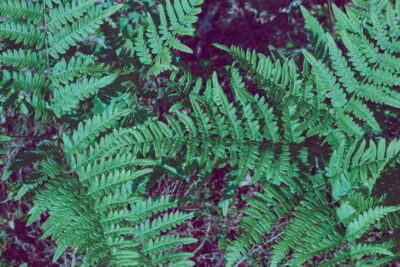
Ferns are among the oldest plant species on Earth—lush, hardy, and perfect for enhancing outdoor landscapes or creating natural wildlife habitats. At Cold Stream Farm, we offer a variety of wholesale ferns, ideal for reforestation projects, shade gardens, and native planting schemes. But before you dig into planting, let’s take a closer look at how ferns reproduce and how to give them the best start in your yard or property.
Understanding Fern Reproduction
Unlike flowering plants or trees, ferns reproduce through a unique process that doesn’t involve seeds or blooms. Instead, they rely on spores, which makes their life cycle one of the most fascinating in the plant kingdom.
Spores and Sori
Ferns develop tiny reproductive cells called spores, usually found in clusters (called sori) on the undersides of mature fronds. When released, these spores travel by wind to new areas where they may settle into a moist, shaded spot to begin the growth process.
The Life Cycle in Two Stages
Ferns have a two-part reproductive cycle:
- Sporophyte Phase: This is the fern plant as we know it—fronds, stems, and roots. It produces spores.
- Gametophyte Phase: Once a spore lands in the right conditions, it grows into a small, delicate structure called a gametophyte. This structure produces both eggs and sperm. If water is present (often dew or rain), fertilization can occur, and a new fern begins to form.
This natural, self-sustaining cycle makes ferns excellent for spreading in areas where you want long-term, low-maintenance growth.
Tips for Planting Ferns Successfully
If you’re planting ferns for a woodland garden, shade landscape, or wildlife restoration project, here are a few simple tips to keep your ferns healthy and thriving:
- Pick the Right Spot – Ferns love cool, shady areas with indirect sunlight. Moist woodlands or the north side of buildings are great options.
- Soil Conditions Matter – They prefer loose, humus-rich soil that holds moisture but drains well. Add compost or peat moss to boost organic matter.
- Mind the Moisture – Keep the soil consistently moist, especially when ferns are newly planted. Avoid letting them dry out during hot or windy conditions.
- Allow Room to Grow – Ferns will naturally spread over time. Depending on the species, give each plant about a foot or more of space to fill in.
- Mulch for Support – A layer of leaf mulch or pine needles mimics a forest floor, helping to retain soil moisture and control weeds.
Why Buy Ferns from Cold Stream Farm?
Based in Michigan, Cold Stream Farm has been supplying bare root trees, shrubs, and ferns at wholesale prices for over 40 years. We’re proud to serve homeowners, landscapers, and conservationists across the Midwest and beyond.
We offer:
- No minimum order requirements
- Discounts on large quantity purchases
- A wide variety of native and wildlife-friendly plants
Bring natural beauty and biodiversity to your landscape with wholesale ferns from Cold Stream Farm. Their low-maintenance charm and unique life cycle make them a timeless favorite in any outdoor setting. Browse our selection and plant with confidence! Contact us today at (231) 464-5809 or visit us online for more information!
